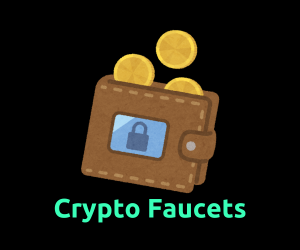In the world of cryptocurrency, volatility is a common issue. Prices can fluctuate drastically in a short period, making it difficult for traders and investors to manage risk. This is where stablecoins like Tether (USDT) come into play. Tether has become one of the most widely used cryptocurrencies, providing stability in a volatile market. In this article, we’ll explore what Tether is, how it works, and why it plays a crucial role in the digital currency ecosystem.
1. What is Tether (USDT)?
Tether (USDT) is a type of cryptocurrency known as a stablecoin. Unlike Bitcoin or Ethereum, whose values can rise and fall sharply, Tether is designed to maintain a stable value. Each Tether token is pegged 1:1 to a corresponding fiat currency, usually the U.S. dollar, but it also supports other fiat currencies like the euro and the Chinese yuan.
- Pegged to the U.S. Dollar: The primary feature of USDT is that its value is tied to the U.S. dollar, meaning that 1 USDT equals 1 USD. This makes Tether less volatile than most cryptocurrencies, providing a “safe haven” for traders looking to avoid price swings.
- Launched in 2014: Tether was created by a company called Tether Limited and was one of the first stablecoins to gain widespread use. It quickly became one of the most traded cryptocurrencies by volume, providing a bridge between traditional finance and the digital asset space.
2. How Does Tether (USDT) Work?
Tether operates on a variety of blockchain platforms, including Bitcoin (via the Omni Layer), Ethereum, Tron, and others. Here’s a step-by-step look at how it works:
Issuance and Redemption
- Issuance: For every 1 USDT issued, Tether Limited claims to hold an equivalent amount of U.S. dollars (or other assets) in reserve. This 1:1 backing ensures that users can redeem their Tether tokens for fiat currency at any time.
- Redemption: Users who hold USDT can redeem it for the equivalent value in U.S. dollars through the Tether platform. The process of issuance and redemption is what helps maintain the stable value of USDT.
Blockchain Compatibility
Tether is available on multiple blockchains, allowing for flexibility and ease of use across various crypto networks:
- Ethereum (ERC-20): One of the most widely used versions of Tether, benefiting from Ethereum’s smart contract functionality.
- Tron (TRC-20): Tether on Tron allows for faster transactions and lower fees compared to Ethereum.
- Bitcoin (Omni Layer): The original version of Tether was issued on the Bitcoin blockchain using the Omni Layer protocol.
This multi-blockchain compatibility makes Tether versatile and accessible to a wide range of users.
3. Key Use Cases for Tether (USDT)
Tether has become a popular choice for many cryptocurrency traders, investors, and businesses. Here are some of its primary use cases:
1. Trading and Arbitrage
- Hedging Against Volatility: Many traders use Tether to move in and out of other cryptocurrencies while avoiding market volatility. For instance, when the price of Bitcoin drops, a trader can sell their BTC for USDT to preserve value until market conditions stabilize.
- Arbitrage Opportunities: Tether is also used for arbitrage, where traders take advantage of price differences between exchanges. Since USDT is stable, traders can quickly move funds between exchanges to profit from price discrepancies in other cryptocurrencies.
2. Payments and Remittances
- Global Payments: USDT is often used for cross-border transactions, offering a stable value without the fluctuations typical of cryptocurrencies like Bitcoin or Ethereum. This makes it an attractive option for payments and remittances.
- Faster Transactions: Compared to traditional bank transfers, sending USDT can be faster and cheaper, especially when transacted on blockchains like Tron or Ethereum.
3. DeFi and Lending
- Decentralized Finance (DeFi): USDT is frequently used as collateral in DeFi platforms. Users can lock their Tether into smart contracts to earn interest, provide liquidity, or borrow against their holdings.
- Stable Collateral: In lending and borrowing protocols, USDT provides a stable form of collateral, making it easier for borrowers and lenders to manage risk without worrying about drastic price changes.
4. The Controversies Surrounding Tether
Despite its widespread use, Tether has faced scrutiny and controversy, particularly around its claim of being fully backed by reserves.
Transparency Issues
Tether Limited has been criticized for its lack of transparency regarding its reserves. While the company initially claimed that every USDT was backed 1:1 by U.S. dollars, it later revealed that its reserves include other assets, such as cash equivalents and commercial paper. This has raised concerns among regulators and users about the stability of Tether.
Regulatory Scrutiny
Tether and its affiliated company, Bitfinex, have been involved in legal battles with regulators, including the New York Attorney General’s office. These legal challenges have centered on the transparency of Tether’s reserves and its role in potentially manipulating the crypto market.
Despite these controversies, Tether remains the most widely used stablecoin, with a daily trading volume that often surpasses that of Bitcoin.
5. Conclusion: Why Tether (USDT) Matters
Tether (USDT) has revolutionized the cryptocurrency space by providing stability in a highly volatile market. Its 1:1 peg to the U.S. dollar makes it a valuable tool for traders, investors, and businesses looking to avoid price fluctuations while still participating in the crypto ecosystem.
With its multiple use cases, including trading, payments, and DeFi, Tether plays an essential role in the broader adoption of digital assets. Despite ongoing regulatory scrutiny, Tether’s dominance in the stablecoin market shows no signs of slowing down, making it a vital component of the cryptocurrency world.


